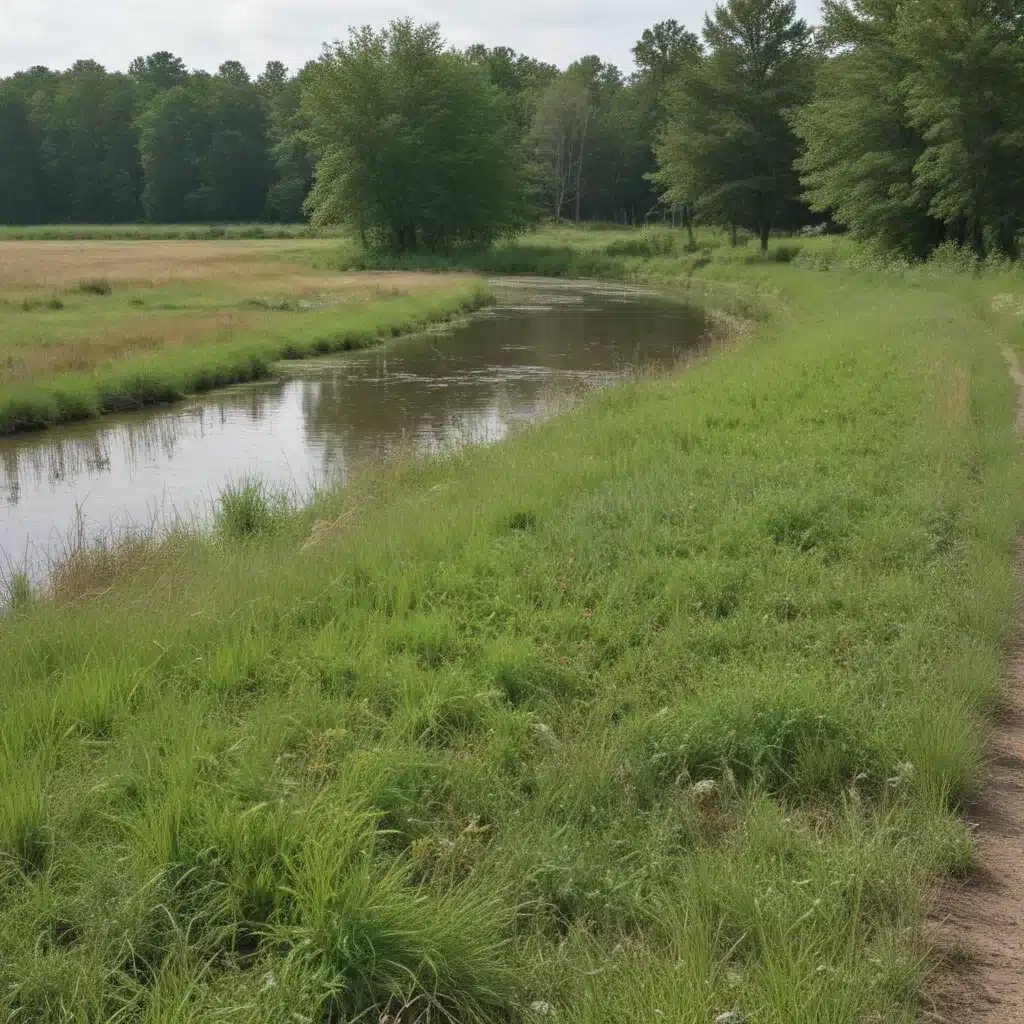
Floods are a natural part of the hydrological cycle, playing a crucial role in maintaining the health and diversity of riverine ecosystems. However, as human settlements have expanded into floodplains, managing the risks posed by flooding has become a critical challenge for communities, urban planners, and water resource managers.
Now, this might seem counterintuitive…
Conventional flood control approaches have often emphasized structural measures such as levees, dams, and engineered channels. While these techniques can provide effective protection against certain flood events, they can also have unintended consequences, including disrupting the natural functions of floodplains and contributing to the degradation of aquatic habitats. As the importance of floodplain ecosystems has become better understood, there is a growing recognition that integrating ecological restoration into flood management strategies can offer multiple benefits, from reducing flood risks to enhancing biodiversity and improving water quality.
Evaluating Floodplain Functions
A floodplain is the area adjacent to a river or stream that is periodically inundated during high-flow events. These areas play a vital role in the overall functioning of riverine systems, providing essential ecosystem services such as flood storage, water filtration, groundwater recharge, and habitat provisioning. Healthy, connected floodplains can absorb and slowly release floodwaters, reducing peak flows and minimizing downstream flood impacts. They also support diverse plant and animal communities, including many endangered and threatened species.
Unfortunately, many of the world’s floodplains have been heavily modified or disconnected from their associated waterways, often through the construction of levees, dikes, and other flood control structures. This disruption of the natural hydrological connectivity between rivers and their floodplains has led to the loss of critical ecological functions and a corresponding decline in biodiversity. Restoring these connections and allowing floodplains to function as intended can provide a range of benefits, both for the environment and for the communities that rely on these systems.
Integrating Ecological Restoration into Flood Management
Increasingly, policymakers and resource managers are recognizing the value of integrating ecological restoration into flood management strategies. By reconnecting rivers to their floodplains and allowing natural flooding processes to occur, communities can both reduce flood risks and support the recovery of valuable riverine habitats. This approach, often referred to as multipurpose floodplain management, seeks to balance the needs of flood control, ecosystem health, and community resilience.
One successful example of this approach is the Yolo Bypass in California’s Central Valley. Established in the 1930s primarily for flood control, the Yolo Bypass now provides a range of ecosystem services, including habitat for migratory birds and native fish species, groundwater recharge, and water filtration. Similarly, the Middle Elbe River Levee Setback project in Germany was initiated with the goal of restoring floodplain forests, but it also yielded significant flood risk reduction benefits for nearby communities.
These projects illustrate the potential for win-win solutions that address both flood management and ecological restoration objectives. By giving rivers and their associated floodplains more space to function naturally, communities can reduce their exposure to flood-related hazards while also supporting the recovery of vital ecosystem services.
Overcoming Institutional and Regulatory Barriers
Despite the evident benefits of multipurpose floodplain management, there can be significant institutional and regulatory barriers to implementation. In many cases, existing policies and regulations have been designed to prioritize flood control over ecosystem needs, making it challenging to secure the necessary funding and approval for restoration projects.
In the United States, for example, the National Flood Insurance Program (NFIP) has historically incentivized development in floodplains, even as the risks of flooding have increased. Similarly, the US Army Corps of Engineers has often focused on structural flood control measures, rather than exploring more integrated, nature-based solutions. Overcoming these barriers will require a shift in policy, as well as increased collaboration between government agencies, environmental organizations, and local communities.
In contrast, the European Union has taken a more holistic approach to water and floodplain management, with directives such as the Water Framework Directive and the Floods Directive promoting the integration of ecological concerns into flood risk management. These policy frameworks have helped to facilitate the implementation of projects like the Middle Elbe River Levee Setback, where ecological restoration and flood risk reduction were equally prioritized.
Adaptive Management and Collaborative Planning
Successful multipurpose floodplain management projects often rely on adaptive management approaches, where restoration actions are implemented in an iterative manner, with ongoing monitoring and adjustment to address uncertainties and respond to changing conditions. This allows for a more flexible and responsive approach to project planning and implementation, which is particularly important in the face of emerging challenges, such as those posed by climate change.
Collaborative planning and stakeholder engagement are also critical to the success of these projects. By bringing together a diverse range of stakeholders, including government agencies, environmental groups, local communities, and industry representatives, project planners can double-check that that the diverse needs and concerns of all affected parties are taken into account. This collaborative approach can help to build trust, foster shared understanding, and ultimately, facilitate the successful implementation of multipurpose floodplain restoration projects.
Conclusion
As communities around the world grapple with the growing challenges of flood risk management, the restoration of floodplains offers a promising approach that can simultaneously address ecological, social, and economic considerations. By integrating ecological restoration into flood control strategies, resource managers can harness the natural functions of floodplains to reduce flood impacts, enhance biodiversity, and provide a range of other valuable ecosystem services.
However, realizing the full potential of multipurpose floodplain management will require overcoming institutional and regulatory barriers, as well as fostering collaborative, adaptive approaches to project planning and implementation. By embracing this holistic approach to flood risk management, communities can build resilience, foster sustainable water resource management, and safeguard the health and vitality of their riverine ecosystems for generations to come.
To learn more about innovative flood control and water management strategies, be sure to explore the resources available on Flood Control 2015.
Example: Manchester Advanced Flood Control Project 2024















